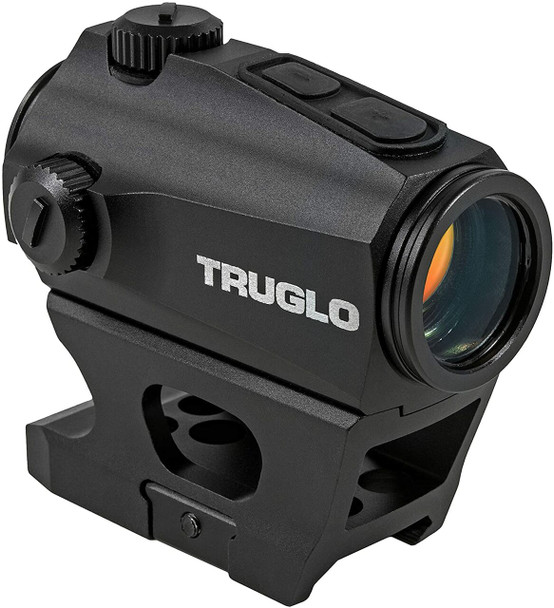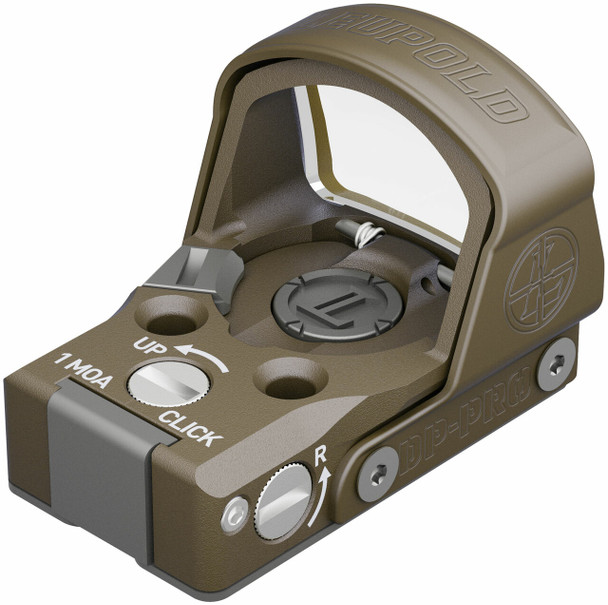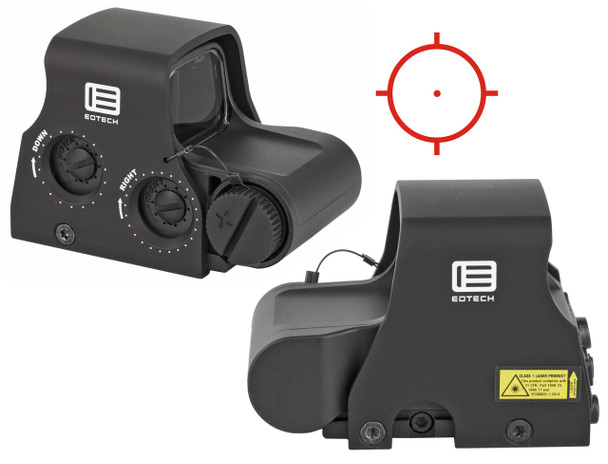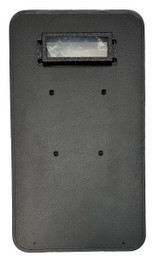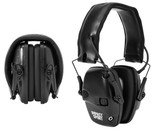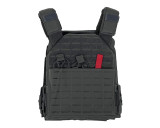Red Dot Sight Vs. Holosight: What is Better?
Red Dot Sight Vs. Holosight: What is Better?
Improved aiming is a key to your success as a sharpshooter, and there are devices to help you achieve this goal easily. These are, of course, sights. Specifically, two of the most contemporary sights: red dot sights and holosights. Which one to select? In this article, we will review pros and cons of both types of sights to help you pick the best type for your purposes.
Red dot sight
The red dot sight is a type of aiming device mounted to the weapon and designed to help a shooter aim better by projecting a red dot to the glass of the sight. This red dot indicates where the bullet will hit.
Principle of operation
The red dot sight features a spherical semitransparent mirror reflector and an LED projector light. The light emitting diode projects a red dot image to the reflector that directs it to the eye of the weapon user. The mirror only reflects red spectrum light and is fully transparent for the rest of the light spectrum. This means that when the shooter looks through the sight he sees the target as usual, but with a red dot reflected from the mirror over the target image.
Red dot sights are often called parallax free in advertising. However, this is not exactly so. Just like any other reflector weapon sight, red dots are only parallax free at infinity. At real ranges, there is always some parallax, the shorter the distance to the target, the greater the parallax distortion is. In spite of this, you don’t have to worry about parallax distortion in most red dot sight models. Why? Because in real world you would use any weapon at specific ranges only. So red dot sights are pre-calibrated for these ranges and hence deliver almost zero parallax distortion within that range, but are subject to parallax distortion otherwise.
Red dot sights come in two “flavors” – tube design and open design. The latter is sometimes called reflex red dot sight, but this is not accurate, because both are just designs, while the principle of operation remains the same, so both are “reflex” in this sense.
Advantages of red dot sights
Red dot sights have a number of pros and cons over holosights (see below). The advantages of red dots are as follows.
- Affordable. Thanks to their simplicity the red dot sights are much cheaper compared to other types of aiming devices. Even the cheapest holographic sights cost far more than the most advanced red dot sights.
- Compact. Red dot sights have very compact size so they fit almost any type of firearms including handguns. And they are lightweight too, which means they don’t hinder your accustomed firing techniques.
- High accuracy. Due to nearly zero parallax distortion within range, red dot sights offer extreme accuracy. You see the red dot – you know the bullet ends up right there, at this dot when you pull the trigger. But you really should keep in mind that at shorter ranges the parallax of the red dot increases greatly.
- Long battery life. A single red LED consumes only tiny amounts of energy which means the sight can function for thousands of hours on a single battery.
- Great for beginners. Due to their constructional, functional and operation simplicity, red dot sights are ideal for beginners providing excellent aim compared to traditional iron sights.
Disadvantages of red dot sights
No, red dot sights are not ideal. Please consider these cons if you consider buying one.
- Parallax distortion. Yes, above we’ve said that parallax distortion is not an issue. However, cheaper models of red dot sights still may be a subject to noticeable parallax. That is why BattleSteel.com picked the best red dot sight models that feature minimum to zero parallax distortion.
- Forces you to refocus your eye. The red dot is projected onto glass so you have to move your eye from that glass to the target and back while aiming. Obviously, this can be inconvenient in some scenarios.
- Fragile. The sight stops operating if the projection glass is broken. There is simply no plane to project the red dot onto, so the device becomes useless.
How to choose a red dot sight
While seemingly a small buy, a red dot sight still requires you to pay attention when you choose it. Here are some things to consider before you buy a red dot sight:
- Weapon to mount at. While many red dot sights are compatible with a wide range of weapons, you still need to take into account the particular piece you will be installing the sight onto. For example, pistols better work with compact models, while red sights with additional filters fit rifles better.
- Size of the red dot. Different sights project red dots of different sizes. A smaller size dot means that target is less obscured which improves aiming, but at the same time smaller dot is harder to see. A bigger size dot makes seeing the dot easier, but affects aiming at shorter distances.
- Brightness. High brightness of the dot simplifies aiming during daytime, but too bright reticle during nighttime is inconvenient. Make sure to select the brightness that matches your primary usage scenarios, or prefer models with adjustable LED brightness.
Holographic sights
Holographic weapon sights or, shorter, holosights use a laser or an LED light to project a reticle to your eye. This may sound very similar to the red dot sight functioning principles we described above, but in fact holosights are based on a completely different approach.
Principle of operation
The basis of the holosight construction is a three-dimensional hologram recorded onto special film. The laser diode emits light through the film, then the emitted light is reflected to the eye. Since the hologram holds a 3D image, the resulting reticle looks like it floats right over the target, in the same optical plane as the target image, and thus simplifies aiming and naturally eliminates parallax distortion at any target range.
Technically, holographic weapon sights just like other reflector sights are not completely parallax free, which means the aim point can move with the eye. However, the parallax distortion can be compensated by recording a holographic image of the reticle that is set at a finite distance with parallax caused by eye movement that does not exceed the size of the optical window at the closest range. Simply put, the majority of holosights on the market have too small parallax distortion within any practical range than anyone could notice or measure.
Advantages of holosights
Here are some pros of holographic sights.
- No need to refocus your eye. The main advantage of holosights comes from their principle of operation. The projected hologram looks like it is drawn over the target so you don’t have to refocus your eye from the reticle to the target and back.
- Better imaging. The glass of the holosight is nearly 100% transparent to light which means better vision and simplified aiming, both at daytime and nighttime. While red dot sight use a semi-transparent coating to reflect the red dot image to the eye, holosights do no need this, so the sight window transmits maximum light and does not impede your vision.
- Works better with a magnifier. Holosights can be used along with a number of other aiming devices including magnifier, IR sights and so on.
- Parallax free. Unlike red dot sights, holographic weapon sights are parallax free at any range, so they are better if close range gunfights are possible.
- Remains operating if the glass is broken. Broken glass does not automatically render the sight non-functional. In fact, even if the glass is broken or obscured by mud or snow, the reticle hologram can still be projected.
Disadvantages of holosights
While holosights are have an advantage over red dot sights, there are some cons of holographic sights that may force you to select some other aiming device. High cost. Technical complexity of holographic sights makes them less affordable in comparison with other types of sights. Bulkier. Optical systems installed into a holosight are bulky, so the overall size of this type of sight is generally too big to install on smaller guns like pistols. Shorter battery life. The LED laser embedded into the holosights is more powerful than a typical LED installed into red dot sight, so a holosight eats the battery faster.
Conclusion
As you can see, every type of weapon sight has its pros and cons. Selecting the one for you involves some preliminary research and comparison of features, and should be based on specific situations you are facing with when shooting and aiming. At BattleSteel®️ we are committed to 100% customer satisfaction, so whenever you need help choosing a sight for your rifle, hand gun or shotgun please don’t hesitate to contact us.
Recent Posts
-
Understanding Ballistic Shield Ratings and Their Applications
The Trusted Name in Tactical Defense - BattleSteel® When it comes to protecting those who protect us …2025-04-19 -
The Importance of Hearing Protection in Tactical Environments
The Legacy of BattleSteel® BattleSteel® is a trusted name in the world of tactical defense equipment …2025-04-14 -
How to Properly Fit and Wear a Plate Carrier
About BattleSteel and Their Mission BattleSteel is a trusted name in the tactical gear industry, ren …2025-04-11
